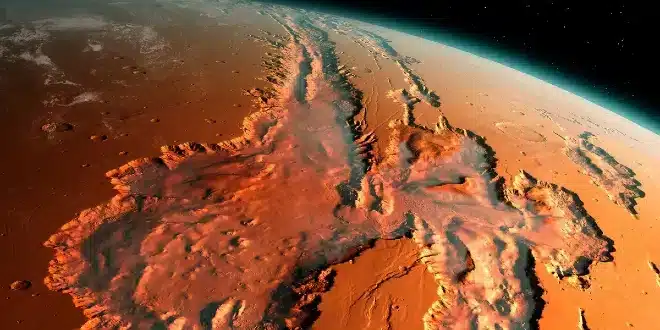Scientists are now suggesting that Mars might have been hospitable to life for a significantly longer period than previously believed, potentially extending into millions of additional years.
In the distant past, Mars was home to vast bodies of water, including oceans, lakes, and rivers, reminiscent of early Earth’s landscapes during the solar system’s early years.
The consensus has been that over time, Mars’ climate underwent changes that stripped the planet of its water, leaving the barren landscape we recognize today. Theories on how Mars lost its water vary, with some scientists arguing it evaporated into space as the atmosphere thinned, and others positing that it became encapsulated within the crust as icy permafrost.
While it was previously believed that Mars became arid during the Hesperian period, which spanned from 3.7 to 2.9 billion years ago, new evidence suggests the presence of water extended well into the late Hesperian period.
A groundbreaking study by researchers from the UK’s Imperial College highlights this extended period of habitability. The team identified evidence of water within the Gale Crater, a 154 km-wide basin near Mars’ equator, indicating that water existed on Mars much later than previously thought.
This discovery is crucial for understanding Mars’ evolving climate and identifying potential habitable zones. Data from NASA’s Curiosity rover revealed deformed sandstone layers within the Martian desert, indicating the historical presence of water.
Dr. Steven Banham, the lead researcher, explained that the deformations in the sandstone could result from various water-related processes, such as pressurized liquid altering the sediment, the freeze-thaw cycle of ice, or the expansion and contraction from briny water subjected to temperature fluctuations.
This evidence underscores water’s pivotal role in shaping Mars’ geological features, suggesting that the planet retained liquid water longer than scientists had once believed, thus broadening the timeframe for potential habitability.


